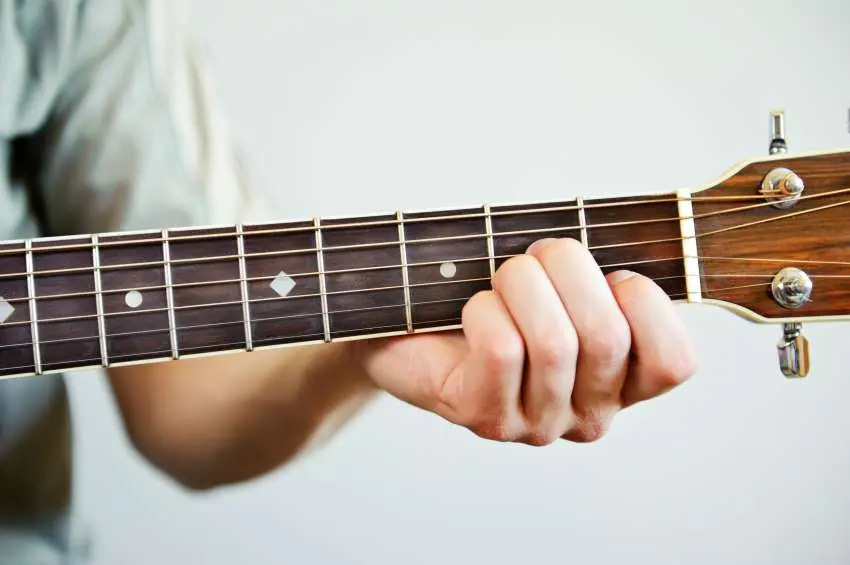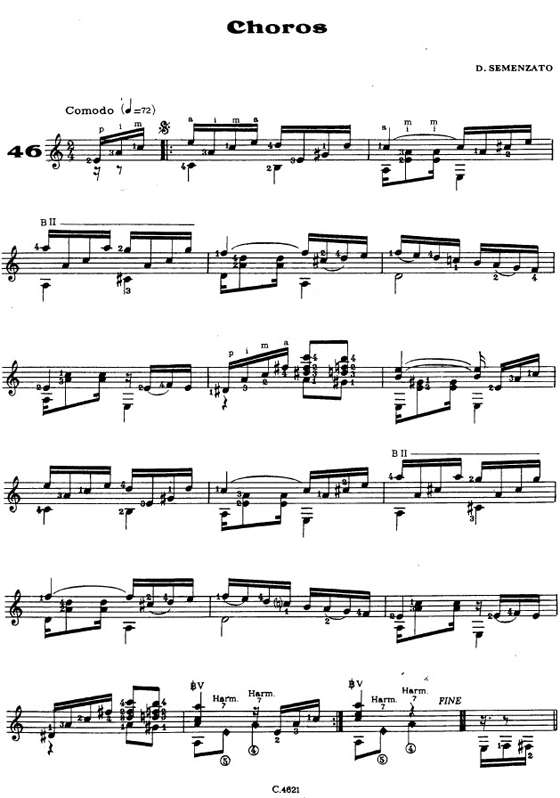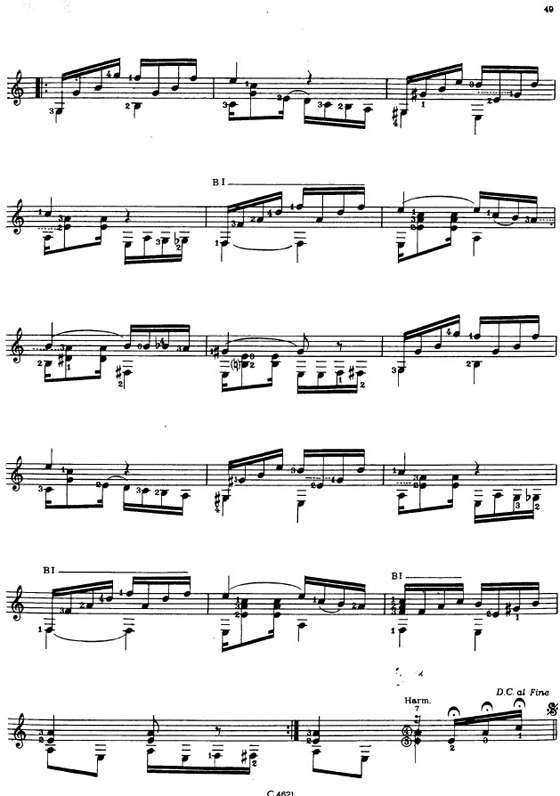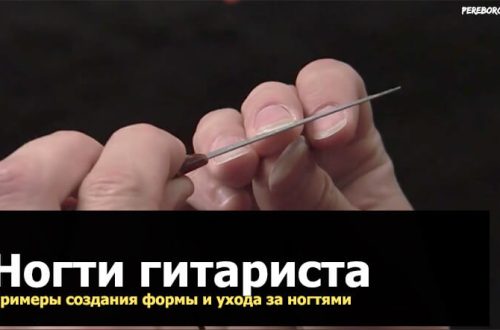
Legato and harmonics on the guitar
“Tutorial” Guitar Lesson No. 21
Reception of legato and performance of harmonics on the guitar on the example of the piece by Shoro D. Semenzato
In this lesson, we move on to a simple beautiful piece by the Brazilian guitarist Domingos Semenzato Domingos Semenzato (1908-1993) Shoro. In foreign music publications, this Shoro is called “Divagando”, which means “Wandering” in Portuguese. In order to play “Divagando” you will have to become familiar with natural harmonics and remember the theme of Lesson 15, which was about ascending and descending legato.
Rising legato
In lesson number 15, everything was much simpler, since there the legato technique was played with an open string, but here we are dealing with the type of legato, where a closed string is used in its execution. Below is an example where the legato technique is recorded on the XNUMXth and XNUMXth frets of the third string. The first measure is the “legato” technique in ascending order: put the first finger on the XNUMXth fret of the third string and extract the sound, then lower the third finger to the XNUMXth fret without the participation of the right hand with a sharply strong blow from top to bottom. You should end up with a slightly quieter sound than what you played on the XNUMXth fret with your right hand. About notation of legato technique in tablature is the topic of the next lesson. 
Descending Legato
The second example of a descending legato in the same picture: put the first finger on the Vth, and the third finger on the XNUMXth fret of the third string. Play a D note pressed with the third finger on the XNUMXth fret, extracting the sound with your right hand, then sharply tear your finger down (to the side) towards the second string, while you should hear the sound up to which you hold the first finger on the XNUMXth fret. So without the help of the right hand, you should hear the sound before. As you can see, in order to play a descending legato on a closed string, it is required that during the playing process a finger be prepared on the note that should be sounded next. In the process of playing legato, carefully ensure that the duration of the sounds corresponds to that written in the notes. If you can’t get the exact lengths, then first play the piece without legato to get used to the correct sound. It is very useful to play legato scales, in this case the fingers of the left hand work to the maximum and the effect of such playing is maximum.
Legato on different strings
There are times when notes are tied, but are on different strings. In this case, the first sound is played as usual with the right and left hand, and the second sound is played simply with a left blow from top to bottom.
How to play harmonics on the guitar
The harmonics are another highlight of the guitar’s delightful tonal palette. In this lesson, we will only touch on the natural harmonics found in this piece. Natural harmonics are played strictly on certain guitar frets Vm, VIIm, and XIIm. They sound brightest exactly at the XNUMXth fret, since this fret divides the string exactly in half, for this reason we will try to learn how to play the harmonic on this fret. Touch the first string just above the XNUMXth fret but don’t press it down. Then, simultaneously with the extraction of sound with the finger of the right hand, the finger of the left hand is removed (raised). If you did everything right, you will hear a high overtone sound. Now let’s look at the reasons why the harmonic cannot be played. 1. The finger of the left hand does not exactly touch the string above the fret. 2. The finger of the left hand is removed not simultaneously with the extraction of the sound, but later or earlier. 3. The finger of the left hand presses strongly, and does not touch the string.
In Shoro, the harmonics are played on the fifth and fourth strings above the 7th fret and are indicated by diamond-shaped notes with the inscriptions Harm on top and the Arabic numeral XNUMX. Shoro is not a difficult piece, but it is already larger than the previous ones and it will take time to learn and play this piece. The first two measures of Shoro are played on the chords Am / C, E7, Am, followed by a measure from the barre on the XNUMXnd fret, then Dm. If you analyze the piece in this way, it will be much easier to learn it.
In the last bar of Shoro’s piece, the fermata sign, which means stop, is first encountered. It is indicated by an arc with a dot below it, the performer at this point must increase the duration of the sound at his own discretion, and stopping does not mean interrupting the sound, but rather increasing its duration. In Shoro, there are three notes with the fermata sign at once: mi, la and do. By slightly increasing the duration of these notes, you will very smoothly and beautifully return to the first part of the piece.



PREVIOUS LESSON #20 NEXT LESSON #22





